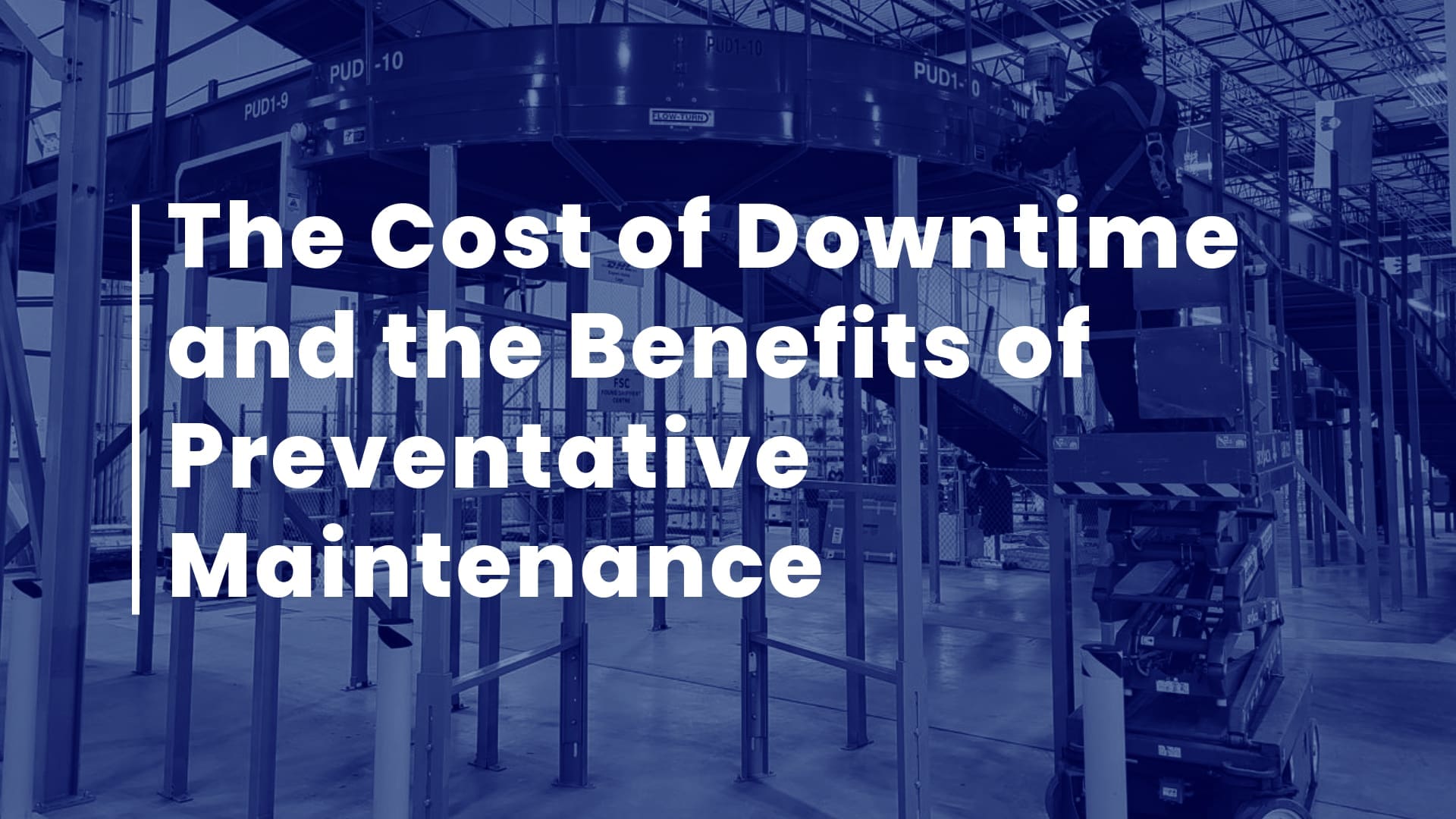Downtime in warehouse operations can have profound financial repercussions. Understanding these costs and implementing effective preventative maintenance strategies is crucial for ensuring operational efficiency and profitability. This whitepaper explores the financial impact of downtime, delves into the benefits of preventative maintenance, and outlines strategies for service and support that can mitigate these issues.
The Financial Impact of Downtime
Downtime in a warehouse setting refers to periods when operations are halted due to equipment failure, system malfunctions, or other disruptions. The financial implications of such interruptions are multifaceted:
Direct Costs:
Labor Costs: Employees remain idle during downtime, leading to wasted labor hours. For instance, if a warehouse with 100 employees at an average wage of $20 per hour experiences a four-hour downtime, the labor cost alone is $8,000.
In manufacturing (automotive, pulp/paper, etc.) downtime costs can be up to $20,000 to $22,000 per hour. For a 750,000 sq. foot warehouse or distribution center operating 5,500 hours per year, downtime costs average around $10,000 per hour. With that in mind, preventing downtime can drastically impact your annual revenue.
Repair Costs: Emergency repairs are often more expensive than routine maintenance. The need for immediate service can also lead to premium charges for expedited parts and labor.
Indirect Costs:
Loss of Productivity: Downtime disrupts the workflow, leading to missed deadlines and reduced output. This can result in delayed shipments and dissatisfied customers.
Inventory Issues: Interruptions in operations can cause inventory bottlenecks, affecting stock levels and leading to either excess inventory or stockouts.
Opportunity Costs:
Lost Sales: In e-commerce and retail, delayed shipments can lead to canceled orders and lost sales opportunities.
Reputation Damage: Consistent downtime can damage a company’s reputation, leading to a loss of trust among customers and partners.
Case Study: Downtime Costs in a Medium-Sized Warehouse
Consider a medium-sized warehouse that processes 2,000 orders per day. If downtime causes a delay of one day, with an average order value of $100, the potential revenue loss is $200,000. Additionally, if the downtime affects customer satisfaction, the long-term impact on customer loyalty and repeat business could be even more significant.

Benefits of Preventative Maintenance
Preventative maintenance (PM) involves regular and systematic inspection, detection, and correction of incipient failures before they become major issues. The benefits of implementing a robust PM program include:
Cost Savings:
Reduced Repair Costs: Regular maintenance helps identify issues early, preventing expensive emergency repairs. Studies have shown that preventive maintenance can save up to 18-30% in maintenance costs compared to reactive maintenance.
Extended Equipment Life: Consistent maintenance extends the lifespan of equipment, delaying the need for costly replacements.

Increased Productivity:
Minimized Downtime: Regular maintenance ensures that equipment operates smoothly, reducing the frequency and duration of unexpected downtimes.
Optimized Performance: Well-maintained equipment performs more efficiently, leading to higher productivity and throughput.
Improved Safety:
Reduced Accidents: Regular inspections and maintenance reduce the risk of equipment malfunctions that could lead to workplace accidents.
Compliance: Adhering to maintenance schedules ensures compliance with safety regulations and standards.

Enhanced Customer Satisfaction:
Reliable Operations: Consistent and reliable warehouse operations ensure timely deliveries, leading to higher customer satisfaction and retention.
Example: Cost-Benefit Analysis of Preventative Maintenance
A study by the International Society of Automation (ISA) found that for every dollar spent on preventive maintenance, organizations save an average of $5 in corrective maintenance and repair costs. This demonstrates the significant return on investment (ROI) that preventative maintenance programs can provide.
Strategies for Effective Preventative Maintenance, Service, and Support
Implementing an effective preventative maintenance program requires a strategic approach. Key strategies include:
Scheduled Inspections and Maintenance: Develop a maintenance schedule based on manufacturer recommendations and operational needs. Use predictive maintenance technologies, such as IoT sensors and machine learning, to monitor equipment health in real-time.
Our research shows that 80% of facility maintenance issues can be addressed by performing preventive maintenance on only 20% of facility systems. In addition, a preventive maintenance program can help you cut costs by 12-18% and save more than $135,000 per year.
| Brightly
Comprehensive Training: Train employees on proper equipment use and routine maintenance tasks. Ensure that maintenance staff are skilled and knowledgeable about the latest maintenance techniques and technologies.
Partnerships with Service Providers: Partner with reliable service providers who offer comprehensive maintenance, repair, and support services. Ensure that service contracts include preventive maintenance, emergency repairs, and regular inspections.
Data-Driven Decision Making:
Utilize data analytics to track equipment performance and identify trends that could indicate potential issues. Implement a computerized maintenance management system (CMMS) to streamline maintenance activities and track work orders.

Continuous Improvement: Regularly review and update maintenance protocols based on performance data and feedback. Encourage a culture of continuous improvement where employees are encouraged to report issues and suggest improvements.
Conclusion
Downtime in warehouse operations poses significant financial risks and operational challenges. By understanding the costs associated with downtime and implementing robust preventative maintenance programs, organizations can enhance efficiency, reduce costs, and improve overall operational performance. Investing in preventative maintenance, comprehensive service, and support is not just a cost-saving measure but a strategic approach to maintaining a competitive edge in the marketplace.
By prioritizing the health of their conveyor systems and other critical equipment, warehouses can ensure smooth operations, satisfy customers, and drive long-term success.




Comments are closed